#ZTT30: Gary Langan on ZTT and the Art Of Noise
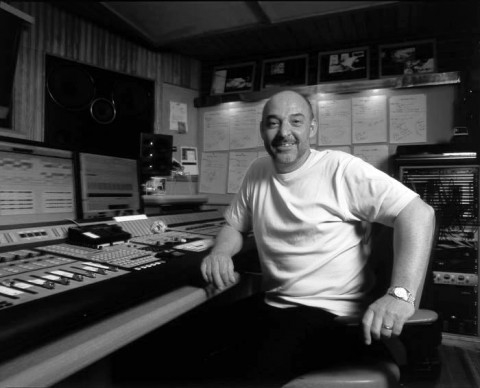
Gary Langan has enjoyed a successful 40-year career in the music industry as a recording engineer, producer, a mixer (and remixer) and is perhaps most celebrated as a founding member of the Art of Noise during the time when he was part of Trevor Horn’s studio team in the early 1980s. This period coincided with the formation of ZTT Records, indeed the Art of Noise were the label’s first official signing.
As part of our celebration of the 30th Anniversary of ZTT Records, we recently caught up with Gary and spoke at length about his career and in particular his time at ZTT and working with the Art of Noise.
SuperDeluxeEdition: Let’s talk about the old days. You first started working in the early days on some Queen records, didn’t you?
Gary Langan: Yes.
SDE: Did you always want to get into music? Were you always interested in working in recording studios?
GL: Yes, I did, from the age of 14, [I] always wanted to work in a recording studio. My father was a musician and used to do a lot of sessions for the BBC and I used to tag along with him in the summer holidays, so from an early age I was introduced to recording studios. He was a dance band musician, he wasn’t a rock musician. I sat on the piano stool from the age of seven and really hated it but still enjoyed music, so I saw this thing that I could be involved in music, but I didn’t necessarily have to be the guy playing it.
SDE: Did you learn a musical instrument?
GL: Yeah, I learned the piano and the trumpet. I enjoyed the trumpet, that was fun because I used to get to play in bands, in little orchestras and things like that but when you play the piano, you’re ‘Billy No Mates’, you really are. There weren’t any portable keyboards or synths when I was eight or nine. It’s a very lonely life.
SDE: How old would you have been in the mid-Seventies when you started your career?
GL: I started 1971-2 and I was 17 ¾. I left school at 16, did my GCSEs, ‘O’ levels as they were called in those days, and then went to college and started doing a degree course in telecommunications, because London was governed by the GLC; the Greater London Council ran it and you couldn’t work if you were under 18 before ten o’clock in the morning or after six o’clock at night. So I was stuffed. I went to college and by way of chance, I got an interview at Trident Studios. I hadn’t learned to lie or bullshit, whatever you want to call it. I got through the interview with Barry and Norman Sheffield who were the two guys who owned the place and they said we’ll take you on as a tea boy, a runner or whatever. And I had to fill out this employment form and I put my real age down – boing! [he didn’t get the job] But then a while later, I got a chance to go and meet the two guys who owned Sarm Studios – it was just Sarm in those days, it wasn’t Sarm East, Sarm West, Sarm LA – and they gave me a job and that was it basically. [I] chucked in college, thought to hell with that, I’ve done enough school stuff, I’m off. So that was the start. I was 17 and a half, 18.
SDE: What did you learn from being in the studio with Queen, the vocal harmonies and all that, was there specific stuff you picked up from those early days?
GL: I learned an awful lot. I had two of the UK’s finest engineers at the time as my mentors, a guy called Gary Lyons whose first big claim to fame was he co-produced the first Foreigner album and a guy called Mike Stone who was Queen’s engineer. So between those two guys, they taught me an awful lot and they were really strict with me but I learned so much.
SDE: When you first started working with Trevor [Horn], that was presumably with the band Yes?
GL: No, no, Trevor found Sarm because it was the first 48-track studio in London, or a purpose built 48-track studio. So he had this demo track, I can’t remember who was funding it, and it was called ‘Come Back Marianne.’ It’s amazing how I can remember it! And he needed to put a tambourine on it and he’d seriously run out of tracks on the 24 track so he employed the services of 48 track, purely to record a tambourine. That was my introduction to Trevor. I then did some other demos and little records with him. We got on really well, then The Buggles started happening so I ended up mixing and doing some final overdubs on that first Buggles album. That was really successful, obviously, then we did a single with a band called The Jags, we did numerous singles with Dollar, Videotheque, Hand Held In Black And White, Give Me Back My Heart. Then we did a remix of a Spandau [Ballet] track called Instinction. Then ABC popped up its head.
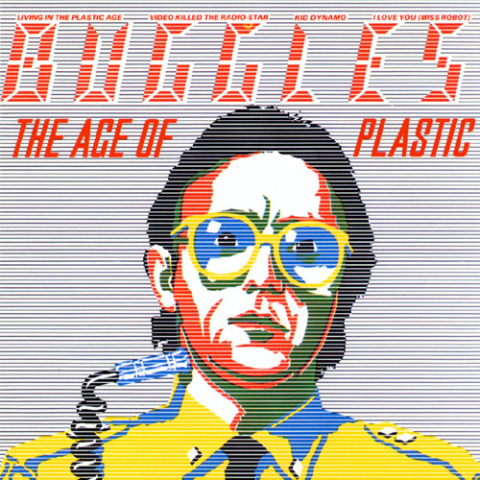
SDE: But what was your relationship like with Trevor in those early days? Was there a feeling that it was going to last the course?
GL: Oh God, we got on like a bloody house on fire. We never used to speak! Didn’t need to because we understood each other. I understood where he was coming from. He was doing all this electronic music, he was one of the first people to really start using drum machines and things like that. I’d had a baptism of fire in punk music with The Boomtown Rats as an engineer on their first album. I hated it! [laughs] So there was this guy Trevor who was doing this completely different way of making records and I really enjoyed it and we got on like a house on fire. Yeah, you didn’t really think “when’s this going to end?…Will it go forever?” I just – not hung onto his shirt tails – but we both realised there was a bit of a partnership here and there was a good division of labour skills and we were being successful. We were like King Midas for a little bit. Everything we touched or he touched became a hit; so the first ABC album, The Look of Love. Then there was Malcolm McLaren, Duck Rock That was before ABC because we were in New York with Malcolm when ABC went to number one and it was Trevor and my first number one album. We went into a bar in Broadway and Trevor was teetotal in those days, so he sat there with a Coke and I think I probably sat there with a large bourbon and that was our celebration of our first number one album.
SDE: But the ‘Duck Rock’ album… in relation to the Art of Noise, that’s often credited as the catalyst that kicked off or brought together the disparate elements of the origins of the band.
GL: Correct. I’d be the first to say that. It was just the biggest eye-opener for me. Malcolm used to have this little phrase – [he’d say] that people get confused with the two words “won’t” and “can’t”. And Malcolm does not accept the word “can’t” because he says half the time, you’re actually saying in your head “won’t”. It was the biggest thing I learned and I got shown so many genres of music. And when I discovered scratching – and this was early Sugarhill [Gang] days – I used to go to this club with Malcolm that used to be a transvestite club up until about one o’clock in the morning, down the Lower East Side of Manhattan. Malcolm would be wearing a Vivienne Westwood crocheted Buffalo Girls suit and it was in cream and slightly see-through. It was like, “Malcolm, I’m not sure I can sit at the bar in this TV club with you dressed like that.” And he’d go, “What are you moaning about, boy? Look at the people around you.” I’m going, “Yeah, I am, Malcolm and they’re freaking me out!” But at one o’clock the club used to turn around and these crews used to come down from the Bronx and they’d bring some scratch DJs, they’d bring some graffiti artists, there’d be a couple of MCs. You got this whole Vaudeville entertainment and it was fantastic. I saw that and to me, that was a real eye-opener and it was the catalyst for the Art of Noise, it really stayed in my head.
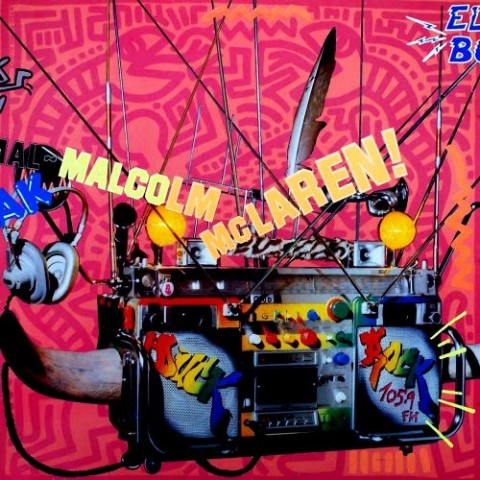
SDE: How did Malcolm’s record come about? Did he just get a deal with some record label, because obviously you don’t think of him as an artist in a releasing-a-pop-record type way… it must’ve been quite expensive to produce.
GL: It was astronomical. We were flying to and from America. We went there two or three times. Obviously the hotel bills…. we’d then fly down to Nashville and Tennessee, then we’d go back up to New York, we’d go back to London. It must’ve cost a fortune. At one point there was no money. I don’t know who he originally had the deal with, but he obviously bamboozled them into it in a typical Malcolm fashion. We were staying in New York, it was the first couple of weeks of the start of this album and the record company just pulled the money, pulled the plug on it. So we were all holed up in this hotel with none of the bills being paid! Eventually he managed to get a deal out of Charisma – typical Malcolm, “no such thing as ‘won’t!”
SDE: On that album, obviously Anne Dudley would’ve worked on it… and J.J. [Jeczalik] …
GL: There was a posse of us, myself, Anne and J.J. and we were the three people that used to make Trevor’s records, so it really wasn’t difficult to work out who was going to be in the band.
SDE: It sounds quite organic how it all started. You didn’t go to the pub and say, “let’s start a band.”
GL: No, no. Moving on down the timeline, [we] finished Malcolm’s album, back in London, I’m now doing… I think it was [Yes album] 90125 and we’d been on this album for months and months. I think we went to 11 different studios and we were on month nine and I was beginning to see blue men crawling up the wall because I was just going stir crazy. Everyone in the band buggered off and Trevor buggered off one afternoon and I’d kept this multitrack tape of this drum track – which is all they had – that we’d cut in studio one of Air Studios, when it used to be in Oxford Street. And they scrapped it, they didn’t think the idea worked. To me, it just had the finest drum sound ever, I was up against Hugh Padgham with In the Air Tonight and Bowie‘s Let’s Dance! I was like “yes, I’ve finally got a drum sound to kill them all dead!” So I kept this tape, I just hid it because I used to look after all the tapes for the album, of which there are possibly in the region of 60 or 70 tapes. None of the band or Trevor knew what was on which tape, I did, so I just used to hide it, every time we’d change studios it would come with me.
So they all buggered off one afternoon and J.J.’s starting to pack up the Fairlight [revolutionary digital sampling synthesizer] and I said, “Whoa, were do you think you’re going? I’ve got this idea,” and I explained it to him and he went, “Langan, you’re nuts.” I said, “I know that, Jon, but hey, just give me a couple of hours and just try this idea out.” And what I wanted to do was put this drum track into the Fairlight. You can only sample one and a half seconds at that time so I made a really good mono mix, gave it to Jon, he put it in the Fairlight and I said, “Ok, we’re only going to get a little bit, one and a half seconds, then we’re going to have to try and loop it,” which nobody had really done before. J.J. who has no musical acumen whatsoever didn’t understand the beats in the bar – one, two, three, four. So I told him to hit ‘sample’ on any of the downbeats and he didn’t. He thought beat three was the downbeat, so what I ended up with was this bar of a whole drum kit that was going beats three, four, one, two. So the groove was completely backwards now and I said, “Genius, Jon, that’s genius, how did you do that?” He went, “What?” I said, “Well, you haven’t sampled the downbeat, you’ve da-di-da-di-da,” and he says, “Oh, have I?” but let’s just carry on.
So that was the start of that, we stayed up for many hours that night because it all worked. We were then able to loop this drum sound which was close to the edit. We had some mad samples like the sound of a car engine being started and things like that, so we ended up with a rough demo of Close to the Edit, and I just had a cassette copy of it. One afternoon, I’m driving Trevor around and we were going off to cut something in North London and I said to him, “You don’t seem really happy these days,” and he went, “No, Cocky,” that used to be his nickname for me. I said, “What’s up?” By this time, The Buggles had broken up and Trevor really liked having his own band and having his own studio project. So he said, “Buggles, I really miss that and I’m thinking about trying to start a studio band again, kind of Buggles take two.” And I thought, shall I? Shan’t I? We were stuck at some traffic lights and I had the cassette in the glove box of this Austin 1100, which was the only thing I could afford at the time. I put this demo on and Trevor goes, “What’s that, Cocky?” and I said, “Well, what do you think of it?” and he goes, “It’s mad, it’s brilliant.” I said, “Ok, I’ll ‘fess up, I’ll confess, I’ve stolen Alan White’s drum kit,” I told him what we’d done and he just thought it was genius, he really did.
At the time he was starting ZTT. He had a meeting with Chris Blackwell that week and Blackwell was going off to New York that weekend, so Trevor played this demo to Chris Blackwell and Chris Blackwell literally took the cassette from Trevor and said, “I’m taking that and I’m taking it to New York and I’m going to play it out in clubs because I think it’s brilliant too.” And that’s what Blackwell did, he took this cassette, took it to a few clubs that weekend in New York, came back and said to Trevor, “Don’t know who they are, what they are, but that’s your first band on ZTT.” And that’s how it really started, that’s the whole truth and nothing but the truth.
SDE: Once that kicked off, did you feel under any kind of pressure to have an album ready by a certain point or was it still just mucking around in your spare time? How did it pan out?
GL: Oh God, it was panic stations really because then we signed this deal and by that time, Anne had been involved because we needed somebody who could do really good melodies and that’s my nickname for Anne, ‘Miss Melody’. You can play Anne anything and she’ll just trip her little wonderful fingers over it and come out with some great melodies. So we signed the deal and ZTT turned around and said we need an album! We looked at each other and went, “Christ, what are we going to do?” because all we had at that time was a couple of really vague sketches of things.
SDE: But you also must’ve been really busy working on a multitude of other stuff?
GL: We were, Anne was doing loads, she was the arrangement queen of the time. Drum programming in the Fairlight was taking off, so J.J. was busy. I was now producing and just doing remixes, so the three of us were really busy but J.J. and I ended up being holed up in the copy room at Sarm East which was a tiny little room, it really was. We came up with these ideas, we’d go out and we’d sample mad things. J.J. was renting a room off me at the time and we’d go to the local squash club. I had a Sony digital cassette recorder – they were a lot bigger than they are now, obviously – so we’d do mad things like go and sample a squash game. We realised you could find a rhythm between the feet squeaking along the floor and the ball hitting the wall and we’d do mad things like that. Eventually, we ended up with an album.
SDE: How important do you think Paul Morley’s contribution was in terms of the presentation side of it, the marketing?

GL: It wouldn’t have worked without him. It was Paul’s idea that the whole band should be anonymous. He came up with the name, J.J. took away the ‘s’ because originally, Paul had nicked this name from this guy called Russolo who was an Italian, mad potty guy at the turn of the 20th Century and he had a band called the Art of Noises and they used to make their own instruments out of bathtubs and things like that. They’d all died so Paul nicked the name and J.J. said, “Why don’t we just call it the Art of Noise?” but it was Paul who did all the artwork and the copy on the album sleeves. It wouldn’t have happened.
SDE: And what was Trevor’s role? One gets the feeling he was just a figurehead, where he would dip in and make suggestions. He wasn’t there producing sessions or anything like that – or was he?
GL: [Pause] I have to be careful here, what do I do, be diplomatic? What did J.J. tell you?
SDE: [laughs] I don’t think I actually asked that specific question to J.J.
GL: I can’t lie. Really, the Art of Noise was Anne, JJ and myself. Paul was the record company, so that’s what record companies did, they did the artwork and things like that. Then Trevor sort of elbowed his way in, that’s about the kindest way I can put it, I don’t have bad feelings about it, but Trevor would just pop along every now and then, make a suggestion and then bugger off. Sometimes we’d think about it and do it and sometimes we’d think about it and go no, that’s just too bonkers, we’re not doing that.
SDE: The nine track album that came out in the end, the ‘Who’s Afraid’ album, Trevor probably would’ve been involved in sequencing that?
GL: Yeah, in the end we used to let Trevor have tasks to do. How it worked, we gave Trevor some of the publishing and things like that. He’s credited as a writer.
SDE: So is Paul, isn’t he, Paul Morley?
GL: Yeah, yeah.
SDE: So it’s a five way split really, isn’t it?
GL: Yes it was. It started out as three and then we ended up at five.
SDE: How pleased were you with the finished product, that album?
GL: I thought it was brilliant, absolutely brilliant. Completely bonkers, never thought it would sell a bean! I thought it was really good. I’d sit back and listen to it and think, “You know what, GL, this is pretty wacky, this is pretty out there,” but as for anybody else getting it, I wasn’t really bothered and none of us were, because we had day jobs. So in the beginning, the Art of Noise was really just a hobby.
SDE: Exactly, so you must’ve been surprised when you had a top ten single in the UK with Close to the Edit?
GL: Yeah, and we’re doing Top of the Pops, that was the most silliest Top of the Pops thing ever. It was the first time that they used video playback because the three of us were truly shocking playing in front of camera.
SDE: Did you have the masks on?
GL: No, not at that stage, we’d come out sort of thing but we were dressed in all this Tudor flamboyancy, not like Adam Ant, it was nuts and the three of us looked awful. I remember when it was our turn to do camera rehearsals, they just locked off one camera on a wide angle setting in the middle of the studio pointing at the stage and said, “Off you go, do what you do.” And we did, which wasn’t very good! I remember at the end, there was complete silence in the studio. Obviously the gallery’s going, “Oh my fucking God, that’s shit! What are we going to do?” So somebody came up with the idea, “They’ve got an amazing video, why don’t they do playback to the video, then we can just do quick shots of them and just go to the video.” So that’s what happened.
SDE: The Art of Noise, that era, 1983/4, that was when I started buying music. Obviously ZTT were quite well known for lots of different remixes, lots of different twelve-inch versions, cassette singles etc. How much did you enjoy that side of it? Did it ever become a chore having to remix something for the third time?
GL: Both. Trevor would say, “I need to do another twelve-inch,” and this would be a Frankie track or something like that, and I’d think to myself, “I’ve already done two, Trevor, what do I do now?” You just had to come up with something, but then that went on with the Art of Noise, he’d say we need to do another twelve-inch. As much as I loved doing it, because it was fun that you could take something apart and throw it against the wall and see what stuck, after your third twelve-inch you do begin to wonder what you can do next.
SDE: But also, you were the artist. Was there ever an element where you’re thinking ‘hang on second, who’s paying for all this studio time?’ It’s going to come out of our …
GL: You’re correct, absolutely correct, and we were working at Sarm West then and getting charged full studio rates. I had various discussions with Jill [Sinclair, who ran the business side of ZTT) going, “This ain’t fair, you’re making it all the way round here. You’ve got the artist signed, you’ve got their publishing, you own the studio. We’ll end up making nothing out of this. Why are we doing it?” and that was the start of the falling out with ZTT.
SDE: There’s this whole thing, where you walked out just before that live showcase…
GL: That great rock thing of walking out of the studio! It was a Friday and there was going to be a ZTT evening at the Ambassadors Theatre in town. We were supposed to be preparing some sort of show and the three of us were mumbling that it’s just not right because we were used to making good money with our day jobs but all three of us had had to stop doing our day jobs, which was fine. But looking at the finances, we were all earning good money and now we’re earning nothing and working twice as hard.
SDE: So that was what effectively led to you all walking out and going off to China Records?
GL: That wasn’t quite so simple. We did do the walking out thing and we literally just left the studio about seven or eight o’clock and never came back, just left everything as it was. Then let the lawyers inform Jill on the Monday morning that we’d had enough.
SDE: J.J. said you were effectively out of contract at that point.
GL: We were, that was the real thing that drove it. We were in the top ten and Jill had forgotten to pick up the option. You have one year options so we’d been signed a year now and she’d missed the option so she sent us all an email saying, “By receipt of this email, it’s taken that you’re agreeing to the second year.” It was like, hang on, what?
SDE: Presumably it can’t have been an email in those days but …
GL: No, it would’ve been a fax or something. I sat there and thought if we’re going to resign, then we should restructure the deal because the deal was nothing, it was peanuts, something like £500 each. It was nothing. So I said to them I think we need to do something about it and there was a bit of argy bargy. Anne and J.J. disagreed with me, then we had this meeting with Jill and I thought the two of them were behind me with the idea that no, we’re not signing the deal unless we sit down and talk about it. And they’d been infiltrated by Jill because she knew that I was the ringleader. So I went into this meeting thinking I’d got the two of them behind me and suddenly their chairs slid over to the other side of the desk next to Jill…. I’m being metaphorical here… and I’m thinking, what’s going on here? This is turning into a bit of a kangaroo court. Then Jill sacked me from my own band! She fired me. Anyway, it goes on and on. We did the walk out from the studio, then Jill put an injunction on us and we weren’t allowed to sign to any record label for a year and Jill let it be known to the industry here, she wrote the letter to the head of every label, CBS, London, all the major labels, saying if you go near this band, I’ll see you in court. So everybody went, we’re not touching that, that comes with loads of baggage and for a year we couldn’t really do anything.
SDE: ZTT was this amazing creative hotbed at that part of the decade but then you get stories like that and the Holly Johnson thing [Johnson had a legal battle with ZTT, which was settled in his favour]. The flipside of the coin seems to be that the contracts and the legal stuff seemed quite problematic in some ways for some of the artists.
GL: Yeah, they were. But that’s just the way that Jill ran the shop. She was ruthless. My only criticism of Jill was I used to say [to her], “You don’t have a heart. You can argue this and argue the toss, but there comes a point in your heavy argument where you just go …” well, and you have a heart. But Jill didn’t in those respects, never had a heart. If it was, it was made out of titanium!
SDE: When you finally signed to China Records, what was the big difference? Did it feel like a weight had been lifted and you suddenly had a lot more freedom?
GL: Yes, we did and the great thing was that we all liked Derek Green [label founder] at China. He was very creative as a label head so we’d have lots of talks with him, he had these ideas and then we’d started working. By this time, Anne had built her own studio up in Sarratt [in Hertfordshire] so we used to go up to Sarratt every day. So we went up there and started working tracks out, we had a few ideas. Then Derek would chip in with why don’t we do a collaboration which had never really been done. So that was Peter Gunn. He suggested “why don’t you do something with Duane Eddy, why don’t you do one of your wacky backing tracks to the original of Peter Gunn” which was written by Henry Mancini? He said, “I’ll get Duane over,” who I had worked with many years earlier as an assistant at Sarm. He did this album produced by Tony Macaulay and I was the assistant on it, so I’d met Duane.
SDE: Did he remember you?
GL: No! Well, not really. So Duane came over, recorded him in Anne’s lounge and Anne still is so tight, it was in the middle of winter and he’d come over from Texas or a hot place in America and Anne wouldn’t put the central heating on during the day [laughs]. There’s Duane Eddy in Anne’s lounge with this huge Gretsch guitar, this amazing rhinestone strap, in this huge sheepskin coat, it was absolutely bizarre. That was the start of the Art of Noise in collaboration. Then came Max Headroom, Tom Jones…
SDE: Did you feel a lot happier at this point than you had earlier on?
GL: Yeah, because things were moving forward, we got a decent deal out of China. It was all fine, it was all absolutely great.
SDE: But how seriously were you taking it, because you must have had what you were calling your day job at this point, you were doing other things, remixing and the like? Was there ever a feeling you’d ditch all that and just do this properly full time?
GL: No, not for me and I don’t think for the other two either, if you put that question to J.J., he would’ve said ‘no’ and Anne would definitely have said no, but we certainly enjoyed working and doing it. But I don’t think any of us really wanted it to be the whole thing of our lives. And Derek understood that so there wasn’t any real pressure from Derek.
SDE: What about all the promotional side of it? It seems to be J.J. and Anne did a lot of interviews together around this period.
GL: Well, I left. I left under a huge cloud! [laughs] That’s what I do, they wanted to go off on tour and do this tour of America and it was booked as a college tour with a sit down audience. It really was just criss-crossing America in a bus and by this stage, I’m 30 and thinking I’m not about to embark on this. And I had this idea, if the Art of Noise is going to play live, then it certainly shouldn’t do a college sit down tour. It’s got to do something more inventive, with loads more character to it. I had this idea and this is way before U2 and Bono did the Zooropa gigs where they used satellite …
SDE: Multi-media…
GL: Yeah, I had this idea – why don’t we do something like ‘the Art of Noise plays Manhattan’, ‘the Art of Noise plays Chicago’ and we do one gig in Manhattan. There used to be a huge club there called Danceteria that was on about three floors. I said what we should do is that’s where we set up but we have a VJ and we have these ENG cameras in three or four other clubs on Manhattan and we do a live transmission back to this club Danceteria, which would then stream it back to these clubs. I was acting on the whole thing of Andy Warhol’s little statement of everyone’s going to be famous for 15 minutes of their life. And I said, “We know none of us are stars to look at, why don’t we make people in the clubs the star of that chorus, that verse and get images from the rest of the world via satellite downlink?” The manager at the time went, “We can’t do that, that’s going to cost a fortune.” I said yeah it is but it’s really creative and it’s what we should be doing and we could do it via sponsorship. I’m sure if we were to go to Panasonic or somebody like that, they’d sponsor us, we’d get the camera gear, all this stuff.
This manager just wasn’t into doing the leg work to get that to happen. And the other two, Anne and J.J. fell in line yet again, it was like history repeating itself, with the manager now. And I went, “You know what guys? I’m out of here,” because we made some good money from the first album with China but they weren’t willing to put up much tour support financially. So it meant we had to pay for it out of our account and I said you aren’t going to make any money, you’re not going to sell any merchandising, it’s just going to be boring. And I went, “I’m just not into it, guys, you want to do it, I’m out of here.” So hence at that point it was just J.J. and Anne.
SDE: But you still remained friends presumably?
GL: Oh God, yeah. I’d see Anne every year. At the moment, we meet up on these ABC gigs because Martin Fry every now and then, although he does all this Rewind stuff, he takes out ABC doing The Lexicon of Love and it’s with Anne and myself. We’ve got a 40-piece orchestra, we do the whole of Lexicon of Love and I see Anne then and we get on like a house on fire. Roger her husband, he’s fantastic. J.J., we’ve rekindled our relationship, enough water’s gone under the bridge.
SDE: There was the reunion or semi-reunion in 1998, with The Seduction of Claude Debussy.
GL: Which I wasn’t involved in.
SDE: Yes, you weren’t involved in that, but were you invited to be involved in it?
GL: No, I was persona non grata, I really was, with Trevor, with Jill, with Anne, with J.J. I was a thorn in their side because I used to tip the cart up and spill things because it needed doing, if you know what I’m saying. So I did become persona non grata for quite a while.
SDE: Did you regret the fact that you and Trevor didn’t continue to work together?
GL: No, I worked for years and years with Trevor and we did some magnificent and wonderful stuff, but I couldn’t be with Trevor forever because I wouldn’t ever be anybody myself. I’d always be Trevor’s sous chef. I’ve no regrets, it wasn’t great. I lost out all the work with Trevor and all that, but the funniest thing was when all that was kicking off, I was producing Spandau Ballet. I was doing Through the Barricades and I was in Munich in Germany. We’d been put up for a Grammy and because I was still persona non grata, I wasn’t invited out to LA to go and pick up the Grammy, if we won it! And we did win it, so my certificate and you get this little Oscar thing …
SDE: The actual award?
GL: Yeah, it got sent to me in this brown cardboard box with these Chinese instructions on how to put it together! Because I was with Spandau at the time, they made this mock ceremony in the bar of the hotel we were staying in and I had my own little awards ceremony in Munich at the Arabella House Hotel.
SDE: Who was there at the Grammys, who picked up the award?
GL: I know Anne and JJ went.
SDE: What was it for?
GL: I’ll have to go and check this because I get this one wrong…[long pause as Gary goes off to seek out the information]… It’s the Best Rock Instrumental performance by a black act! Absolutely genius.
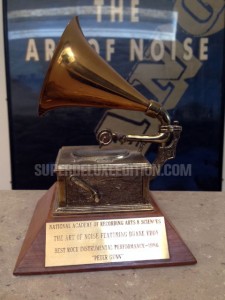
SDE: Can I ask you a little bit about some of the other work you’ve done with other artists. I’m a big fan of your Billy Idol ‘White Wedding’ remix.
GL: That was a fantastic album. I was supposed to be in New York for two weeks, I think I stayed there four months in the end doing that album. That was fantastic, I had a great time doing that, I loved it. Got on really well with Billy, Billy thought it was great.
SDE: Yeah, seems like a fun guy.
GL: He’s fairly potty but I understood where he was coming from and Keith Forsey I got on really well with, so much so that they just used to leave me to it and they’d go away for a week. I wouldn’t see them and they’d come back at the end of the week. I was only allowed to mix one track a week, hence the amount of time I was out there.
SDE: That remix of ‘White Wedding’ is really interesting because it’s supposedly this rocky song but it turns into quite a synthy, pulsing kind of remix.
GL: Yeah, it was a really good remix. The first one I did for him Flesh For Fantasy, I did a fantastic twelve-inch remix of that [the Below The Belt Mix]. It really, really is good and because I did that, that’s how I got the album [GL mixed 1986’s Whiplash Smile]. But J.J. was with me on that, I brought him down as a Fairlight programmer. That was a great album. Sweet Sixteen, I love that song, fantastic song. I loved it, I loved doing that album. I was in New York for four months, I was getting paid lots, I was working with great people.
SDE: Just to finish off, it’s the 30th anniversary of ZTT, we’ve talked a lot about it but how would you sum up the classic era between 1981/2 to 1985?
GL: That’s a big question that requires a really big answer…
SDE: That’s all right, I like big answers…
GL: I know, I’m thinking I ain’t got one at the moment! [laughs] There have been lots of highlights in my life, whether it be the birth of my daughter, things like that. It was just a wonderful time but nothing can last forever so it had to change and it did change. They were fantastic times, I loved working with them all, we all got on well. There were obviously the odd eruptions but it was just fantastic, full of great memories and great times. When that happens, it really strengthens your confidence in going off and doing things. Hence, if I hadn’t gone through that whole early Eighties thing, I wouldn’t have had the confidence to start Metropolis Studios, which has become another legacy. That’s another great thing that I did. When we were starting that, I used to say to my partner Carey, “I’ll get involved in something as long as I come in first or last because they’re the only two positions that people really remember.” Nobody remembers who came second, third, or fourth. They know who struggled in last and they know who got in first so I said we could do this and it could be the biggest white elephant the UK’s ever seen in terms of a studio build or it could be fantastic but it ain’t going to be second, third or fourth.
But having done all the stuff with Trevor and Anne and J.J. and all the other things, it just gave me the confidence to say yes, let’s go and do this, it’s completely mad. And for about 18 months to two years, I was yet again persona non grata because every other studio owner in London was just enraged with what we were going to do. They would tell me, “You’re going to fail, I don’t know why you’re doing that,” which was the wrong thing to say because it just used to spur me on even more. But for a good period of time, I used to walk around London with knives in my back and it was really difficult for me to get studio time. There was a conspiracy, I was blocked. Sarm was my studio, I had the final argument with Jill and I was now by myself so I didn’t have a home studio so Metropolis was going to be my home studio. But in the meantime, I had three or four others around London that were truly my favourites like the Townhouse, it’s not there any more, Eden Studios that’s not there any more. But when they learned what I was going to do in Chiswick with Metropolis it was like, we don’t want him in our studio. It really was hard, it was tough but it just used to give me more strength to carry on.
SDE: Do you think the era of the big recording studio is sustainable … ?
GL: No, it’s gone, finished, over. There’s no way you can make money out of a recording studio today. Plus the fact I moved on from studios in the last seven or eight years because I got really bored. I spent a good 30 years of my life in studios with bands, with musicians, with microphones, with tape which was great and it was fantastic. Then this whole digital scenario comes along which is also fantastic, but it’s not for me. I’m doing something at the moment for Carol Decker, T’Pau and I’m just mixing it on my laptop through my home system here. But my concentration span is down to about half an hour of sitting and looking at this screen so I moved on again and I try and do live work now.
SDE: I was going to ask you what you’re up to these days, is that your preference, live stuff?
GL: I’ll get involved in all the Eighties Rewind festivals. I’ll get involved with ABC. There’s a few other bands I might get involved with in terms of doing front of house but now I’m also an ambassador for a speaker design company. Somehow, I just have to be involved in music one way or another. I love doing live work, I love the adrenaline, I love being able to run 100 metres down the O2 to go and move a microphone! I truly do. It’s what I was trained to do. You go, that doesn’t sound great, why doesn’t it sound great and you look at it and some twat’s put the wrong mike up in the wrong position which is okay but I can change that, I can make it better. To me, doing gigs, you’re just work with a huge hi-fi system.
SDE: Going back to the Seventies and your era, where are people learning these skills these days?
GL: They’re not. They sort of are and they aren’t. In those days, I had my own assistant, I had this guy called John Brough. He used to be an assistant at the Townhouse and he was always brilliant and when I went solo from Trevor, I offered John a full time job, I’d pay him a wage every year and he would be my assistant and he learned that way. That doesn’t happen any more. The only way that they learn is by doing the BA course now in studio production. I lecture at Southampton University and at ACM [Academy of Contemporary Music] in Guildford. But that’s where they learn. I look down at them, 30 of them, second year students and I think to myself, what are you going to do? It’s in an industry that will turn and change but you’ve got to do it and I think, I don’t know whether they’ve got the chutzpah to do it. They all call themselves producers.
But that’s where they learn their trade and what do they learn? They don’t learn mike technique, they don’t learn how to deal with people. When you’re an assistant in a studio, like when I was doing all the Queen stuff, I was 19 or 20, I just turned 21 when Bohemian Rhapsody was number one. But I’d spent weeks, months with Freddie, Roger as an assistant but learned to know how to deal with certain people. They don’t learn those sort of skills, those are the skills they’re lacking, on how to get the best out of a musician. You can’t teach, you have to learn that on the floor. You have to have change, I’ll never stand in the way of change, it’s evolution.
GL: What I’d really like, my wish for the future, is that somehow the Art of Noise gets back together again and we go on tour and we do it properly.
SDE: Funny you should say that, because J.J. was dropping a few hints, I don’t know whether you want to say anything about that but apparently there’s conversations going on.
GL: There are conversations, everybody’s aware of it [pause] But it’s going to be a tough cookie to pull together because Anne now, double Oscar winning whatever, Trevor … JJ’s given up teaching and retired so he’s looking for something to do. Trying to pull it all in is a bit of a hard task but that’s my wish, that we can get it together because I know what can be achieved technically live now, having done it for seven or eight years and having done things like War of the Worlds where we did use 3D holographic technology, huge effects, steam flames and things like that and three ton Martian fighting machines coming out of the lighting rig, firing gas at the audience. I’m not saying we’d ever do that but what you can do technically now in terms of production is quite staggering. So that’s my wish and yeah, there are conversations.
SDE: So maybe 2015 or something like that?
GL: Yeah, let’s say we’ve seriously started talking in the spring of this year, it wouldn’t be until 2015 that you could get it on the road and then it’s who’s going to finance it because again, my ideas don’t come cheap.
Thanks to Gary Langan who was talking to Paul Sinclair for SuperDeluxeEdition.
The 30th anniversary ZTT compilations are out now: Frankie Said Deluxe Edition, The Organisation of Pop and The Art of the 12″, Volume Three.

 Interview
Interview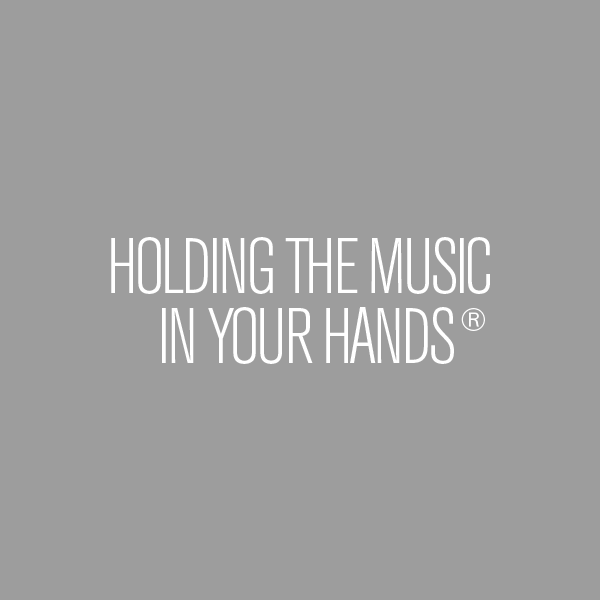
 SDEtv
SDEtv Reviews
Reviews
By Paul Sinclair
23